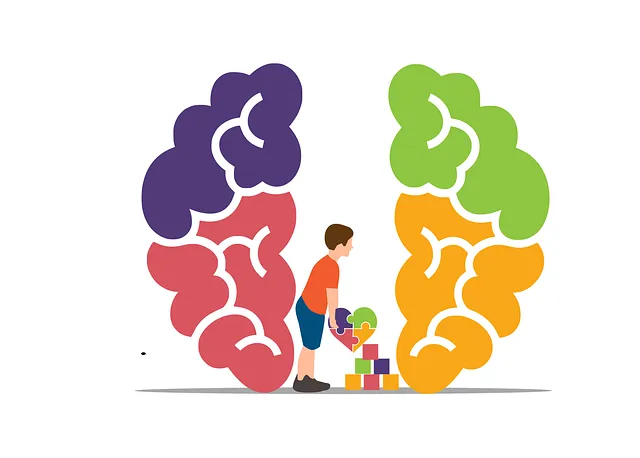Highlands Ranch Kaiser Permanente (HRKP) mental health services prioritize risk assessment for comprehensive harm minimization planning. By evaluating hazards and their impact on patients, staff, and community, HRKP ensures high-quality, tailored care focused on resilience and self-care. This includes mindfulness workshops, art therapy, open conversations about mental health, and empowerment strategies. Risk identification involves analyzing environmental factors and psychological vulnerabilities, leading to targeted interventions like meditation practices, self-esteem programs, and community outreach. Comprehensive harm minimization strategies integrate policy analysis, evidence-based practices, and cultural sensitivity, with proactive measures like crisis intervention guidance and supportive systems for enhanced mental wellness. Regular monitoring, data analysis, and continuous improvement are vital for successful implementation.
“Risk assessment and harm minimization planning are vital components of any healthcare organization’s strategy, especially in complex environments like Highlands Ranch Kaiser Permanente’s mental health services. This article explores a comprehensive approach to these critical processes. We begin by establishing the fundamentals of risk assessment as a cornerstone for harm minimization. Subsequently, we delve into unique considerations within the mental health landscape, providing insights on identifying and evaluating risks specific to clinical settings.
Key strategies for developing robust harm minimization plans are presented, followed by guidance on implementation, monitoring, and continuous improvement.”
- Understanding Risk Assessment: A Foundation for Harm Minimization
- The Mental Health Landscape: Unique Considerations at Highlands Ranch Kaiser Permanente
- Identifying and Evaluating Risks in a Clinical Setting
- Developing Effective Harm Minimization Strategies
- Implementation, Monitoring, and Continuous Improvement
Understanding Risk Assessment: A Foundation for Harm Minimization

Risk assessment is a fundamental process in healthcare, especially within organizations like Highlands Ranch Kaiser Permanente mental health services. It involves meticulously evaluating potential hazards and their likelihood of causing harm to patients, staff, or the community. By understanding and identifying these risks, mental health professionals can implement targeted strategies for harm minimization. This proactive approach ensures that high-quality care is provided while managing and mitigating any potential dangers.
At Highlands Ranch Kaiser Permanente, risk assessment forms the backbone of comprehensive harm minimization planning. It encourages a culture of safety where self-awareness exercises and healthcare provider cultural competency training play pivotal roles. By fostering an environment that prioritizes patient well-being, the organization can effectively address issues related to Self-Esteem Improvement, ensuring that every individual receives care tailored to their unique needs while navigating potential challenges.
The Mental Health Landscape: Unique Considerations at Highlands Ranch Kaiser Permanente

The Mental Health landscape at Highlands Ranch Kaiser Permanente requires a nuanced approach due to the unique needs and challenges faced by its diverse community. With a focus on holistic well-being, the facility prioritizes not just treating mental health conditions but also fostering resilience and promoting self-care practices among patients. This involves implementing various stress reduction methods tailored to individual preferences, from mindfulness workshops to art therapy sessions.
Highlands Ranch Kaiser Permanente recognizes that building mental fortitude is a gradual process. They encourage open conversations about mental health, breaking down stigma through educational initiatives and support groups. By integrating confidence-boosting strategies into their care plans, they empower patients to navigate life’s challenges with enhanced coping mechanisms. This comprehensive approach ensures that individuals leave the facility equipped with the tools needed for long-term mental wellness.
Identifying and Evaluating Risks in a Clinical Setting

Identifying risks in a clinical setting, such as those at Highlands Ranch Kaiser Permanente mental health services, involves a meticulous process. Healthcare professionals must scrutinize various factors unique to their environment and patient population. This includes assessing the potential for harm from both environmental hazards and psychological vulnerabilities among patients. For instance, in a high-pressure environment like a mental health clinic, stress and anxiety can exacerbate existing conditions.
Evaluating these risks requires a comprehensive approach. It involves analyzing historical data on patient outcomes, incident reports, and staff observations. By understanding the patterns and triggers, healthcare providers can implement targeted strategies. These might include promoting mindfulness meditation practices to reduce stress, fostering self-esteem improvement programs, or designing community outreach initiatives to enhance support networks for at-risk individuals. Such proactive measures are key to harm minimization planning, ensuring a safer and more nurturing clinical environment.
Developing Effective Harm Minimization Strategies

Developing effective harm minimization strategies involves a multifaceted approach tailored to address unique challenges within Highlands Ranch Kaiser Permanente mental health services. By integrating principles from Mental Health Policy Analysis and Advocacy, healthcare providers can ensure interventions are informed by evidence-based practices and aligned with current mental health guidelines. This includes fostering Cultural Sensitivity in Mental Healthcare Practice, recognizing the impact of cultural nuances on patient outcomes and tailoring care accordingly.
Strategic planning should encompass proactive measures such as Crisis Intervention Guidance, enabling early identification and de-escalation of high-risk situations. Moreover, it involves implementing supportive systems that promote resilience and coping mechanisms among vulnerable populations. Through collaborative efforts between healthcare professionals, policy makers, and community stakeholders, these strategies aim to minimize harm and enhance the overall quality of mental health services delivered at Highlands Ranch Kaiser Permanente.
Implementation, Monitoring, and Continuous Improvement

The successful implementation of risk assessment and harm minimization planning requires a dynamic approach. Once strategies are put in place at Highlands Ranch Kaiser Permanente mental health services, monitoring becomes essential to ensure their effectiveness. Regular reviews and data analysis play a crucial role in identifying areas for improvement. This continuous process allows the healthcare provider to adapt their practices, especially when addressing the evolving needs of patients.
By integrating Mental Wellness Journaling Exercise Guidance and Conflict Resolution Techniques into daily operations, the team can foster a safer environment. Additionally, Healthcare Provider Cultural Competency Training should be seen as an ongoing initiative, promoting inclusivity and effective communication. These combined efforts contribute to a culture of continuous improvement, ultimately enhancing patient care and outcomes at Highlands Ranch Kaiser Permanente.
Risk assessment and harm minimization planning are essential components of providing safe, high-quality healthcare, particularly in complex environments like Highlands Ranch Kaiser Permanente mental health services. By understanding the unique risks within our clinical settings and implementing targeted strategies, we can ensure a proactive approach to patient safety. This comprehensive framework, as illustrated by the case study at Highlands Ranch Kaiser Permanente, empowers healthcare professionals to make informed decisions, ultimately enhancing patient outcomes and fostering a culture of continuous improvement.


